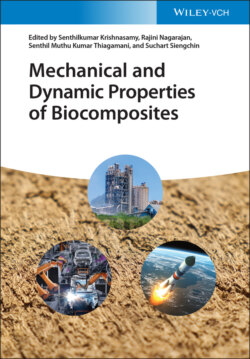Читать книгу Mechanical and Dynamic Properties of Biocomposites - Группа авторов - Страница 20
1.4.1.5 Coir/Silk FRP Hybrid Composites
ОглавлениеSilk is a continuous protein fiber characterized by its soft, light, and thin nature and produced by different insects. The silkworm and spun synthesize silk fiber, such as silk cocoon. Large quantities of silk proteins (sericin and fibroin) are produced by the silkworm at the last stage of larval development [31]. These silk proteins are key components of the silk cocoons. Silk fiber, with its huge specific strength and stiffness, have wonderful luster and excellent drape. It prides itself as the strongest material in nature. It however has poor resistance when exposed to sunlight [4].
Using unsaturated polyester matrix, Noorunnisa Khanam et al. [32] in an investigation into the coir/silk fiber hybrid composites used various fiber lengths of 10, 20, and 30 mm. Sodium hydroxide (NaOH) solution was used to treat the coir fibers in order to eliminate their lignin and hemicellulose, thereby causing better bonding of the fiber with the matrix. Composites of 20 mm fiber length showed higher tensile and flexural strengths than the 10 and 30 mm counterparts, as shown in Table 1.6. The tensile, flexural, and compressive strengths were improved significantly in the coir/silk hybrid composites, owing to the NaOH treatment that facilitated the bonding at the coir fiber–polyester matrix interface.
